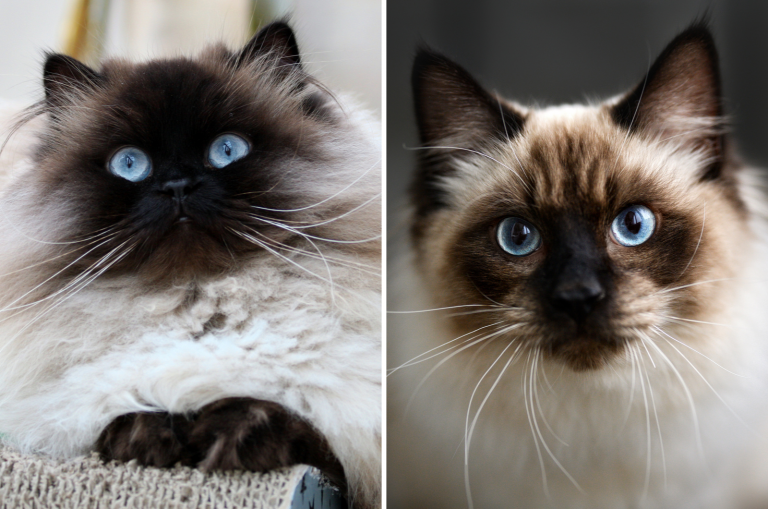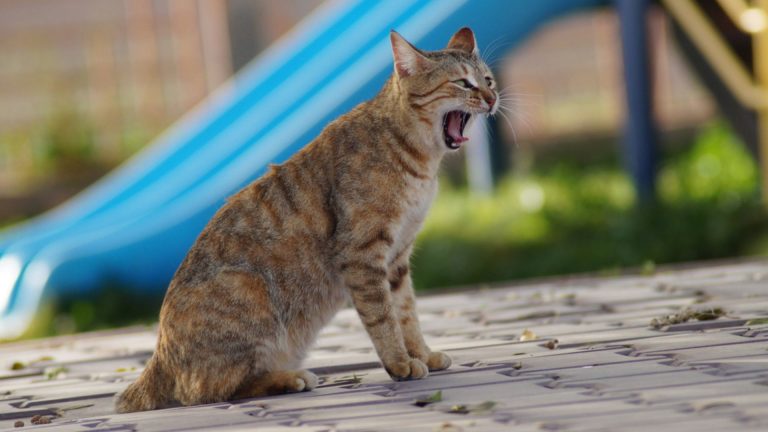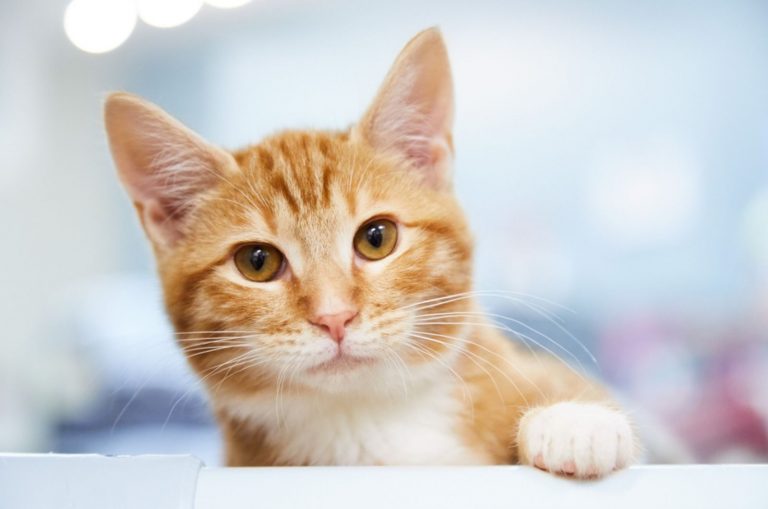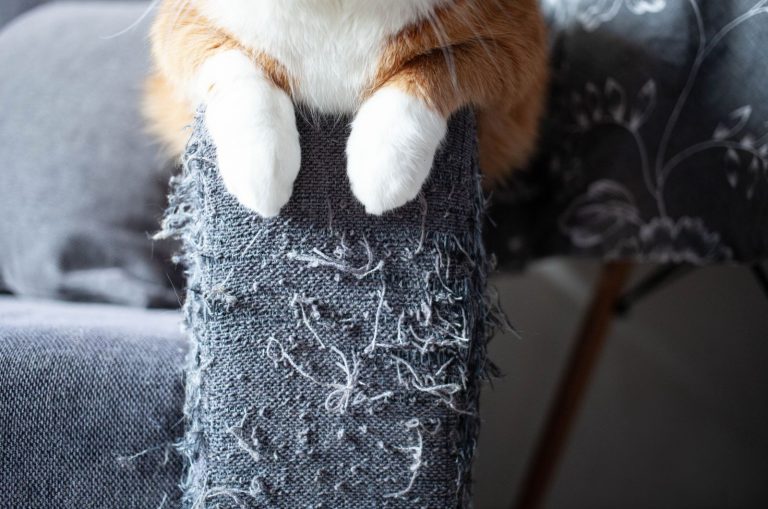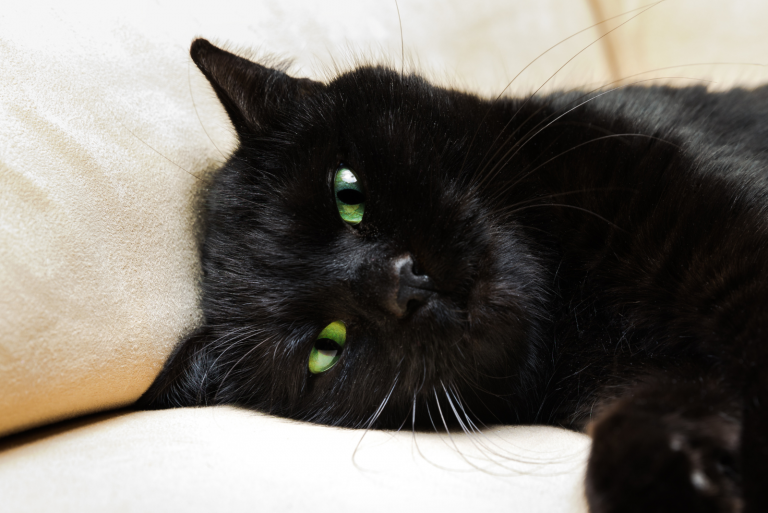Prolapsed Rectum Kitten: Causes, Symptoms And Treatment
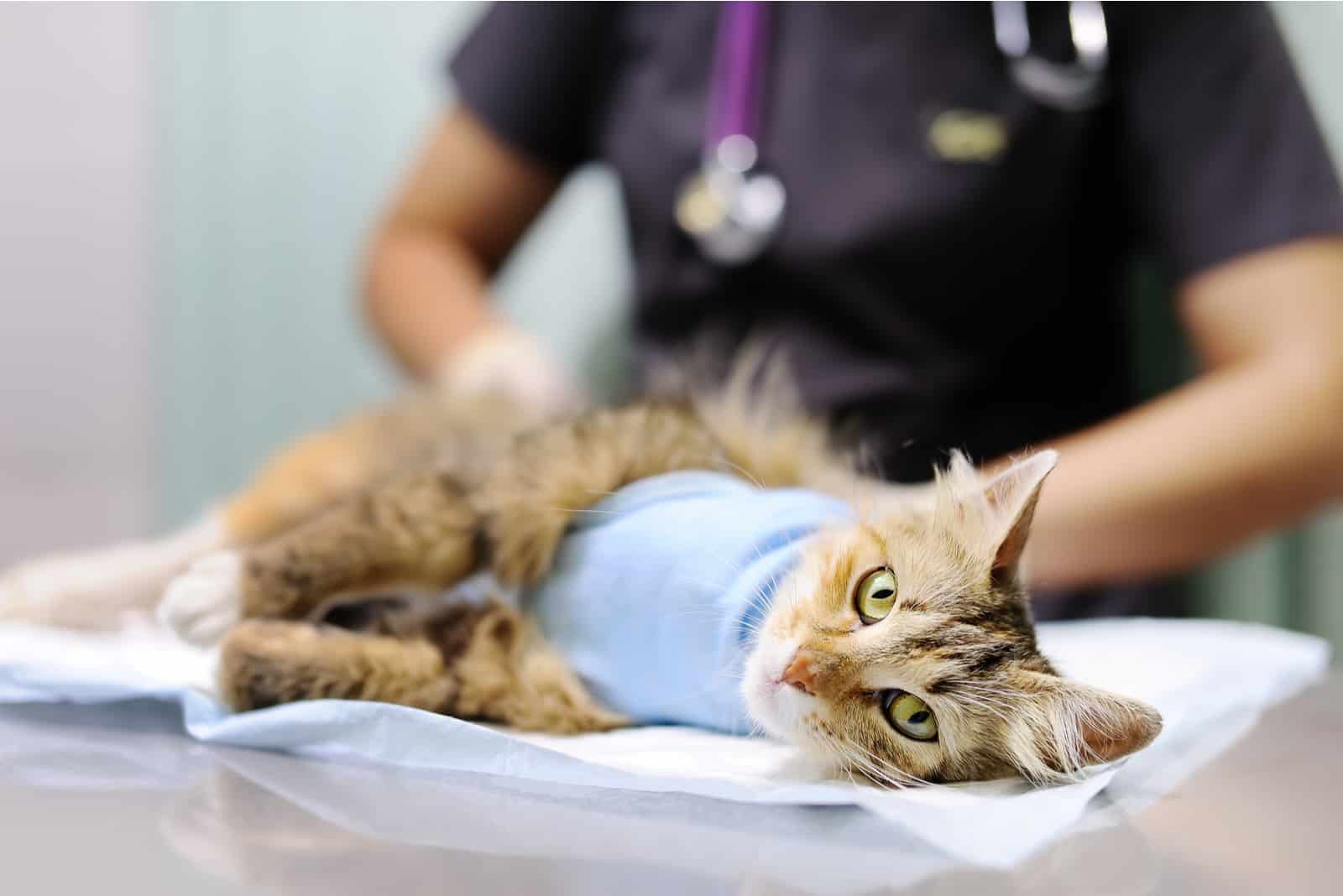
A prolapsed rectum in a kitten or cat is very different from a more simple case of hemorrhoids. Hemorrhoids are a condition in which a vein in the anal area becomes swollen.
Rectal prolapse, on the other hand, is a condition in which a part (or the entirety) of a cat’s rectal tissue comes out through the anus.
Rectal prolapse, or protrusion of the rectum, most commonly happens in 6 months old kittens.
In kittens, this can be seen fairly soon after it occurs, whereas adult cats usually hide their symptoms so you can’t detect that something is wrong.
There are various different causes and symptoms, as well as ways of treating a prolapsed rectum in a kitten or cat.
Continue reading to find out more about this condition and how you can help with your cat’s recovery.
Rectal Prolapse
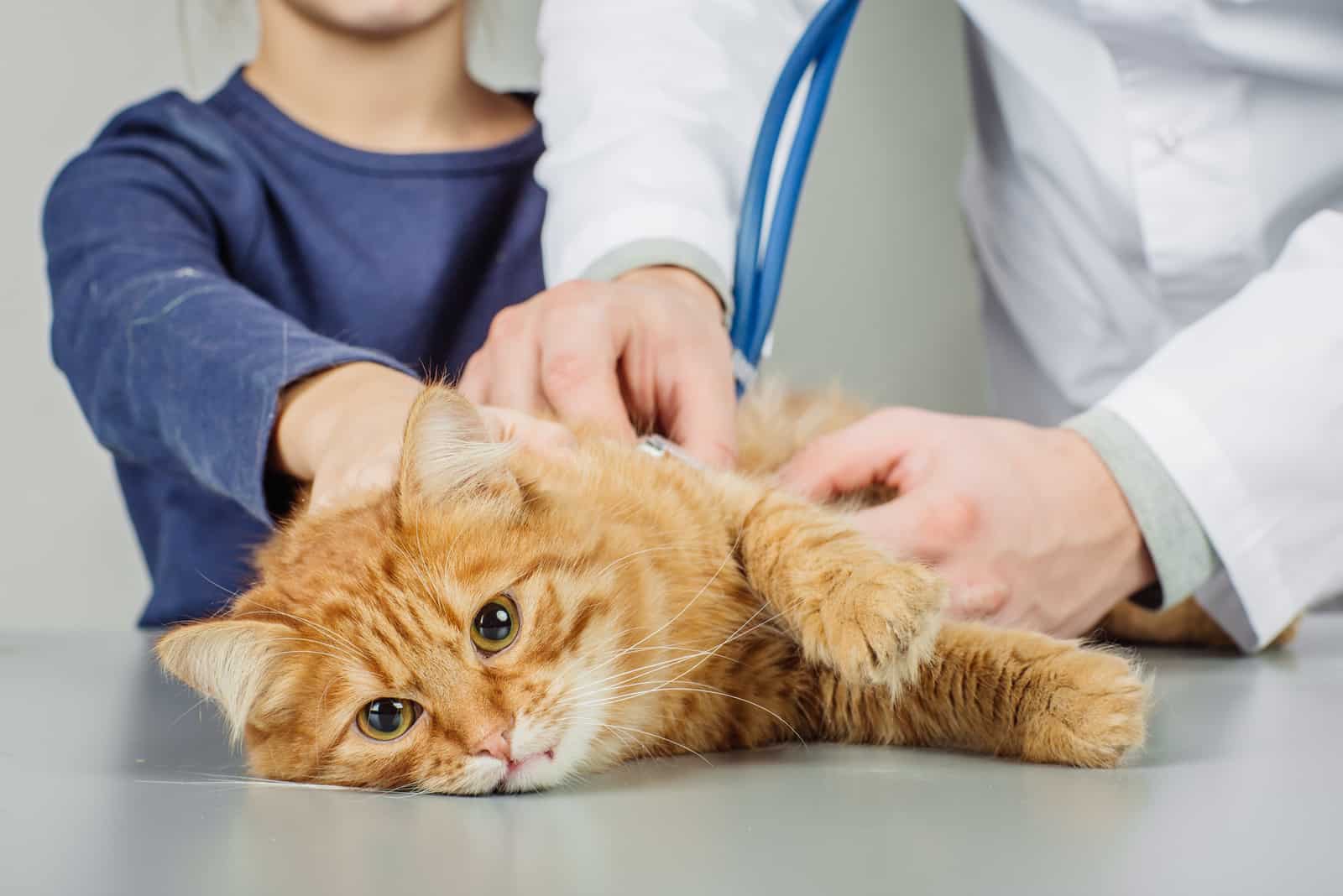
The rectum is the section of the gut that links the large intestine to the anus.
Rectal prolapse happens when a protrusion of part or all of your cat’s rectal tissue passes through the anus, and the tissue is typically dark pink or red in color.
There are three types of rectal prolapse:
Complete rectal prolapse – All layers of the rectum pass out of the anus when a full rectal prolapse happens.
It will look like a tube, with the inner layer of the rectum showing on the outside. If a full rectal prolapse happens, veterinary care is needed urgently.
Incomplete rectal prolapse – In incomplete rectal prolapse, when your cat strains to pee or defecate, the rectal tissue will protrude.
The rectal tissue will return to its natural position when the cat has finished straining and will no longer be visible. This is a serious issue that should be addressed since it can worsen.
Internal rectal intussusception – Internal rectal intussusception occurs when the rectum’s internal gastrointestinal tissue folds into itself (on the inside), a condition known as telescoping.
Because prolapse can occur inside the cat’s body, it can be asymptomatic, however, you may still notice symptoms similar to other kinds of rectal prolapse.
Why Does It Happen?
Rectal prolapse can happen when a cat has been straining to defecate for an extended period of time.
Some of the main causes are intestinal worms, dehydration, constipation, diarrhea (or loose poo), an intestinal obstruction (such as a tumor), or having ingested an item that is hard to digest.
Straining weakens the tissues that hold the rectum in place, allowing the rectum to protrude through the anus.
Continue reading to learn more about the common causes of prolapsed rectum that a kitten or cat might have, including the main symptoms, and what can be done to help.
You may also want to see: Cat Leaking Brown Fluid – Causes, Symptoms, and Treatment
Prolapsed Rectum Kitten: Causes & Symptoms
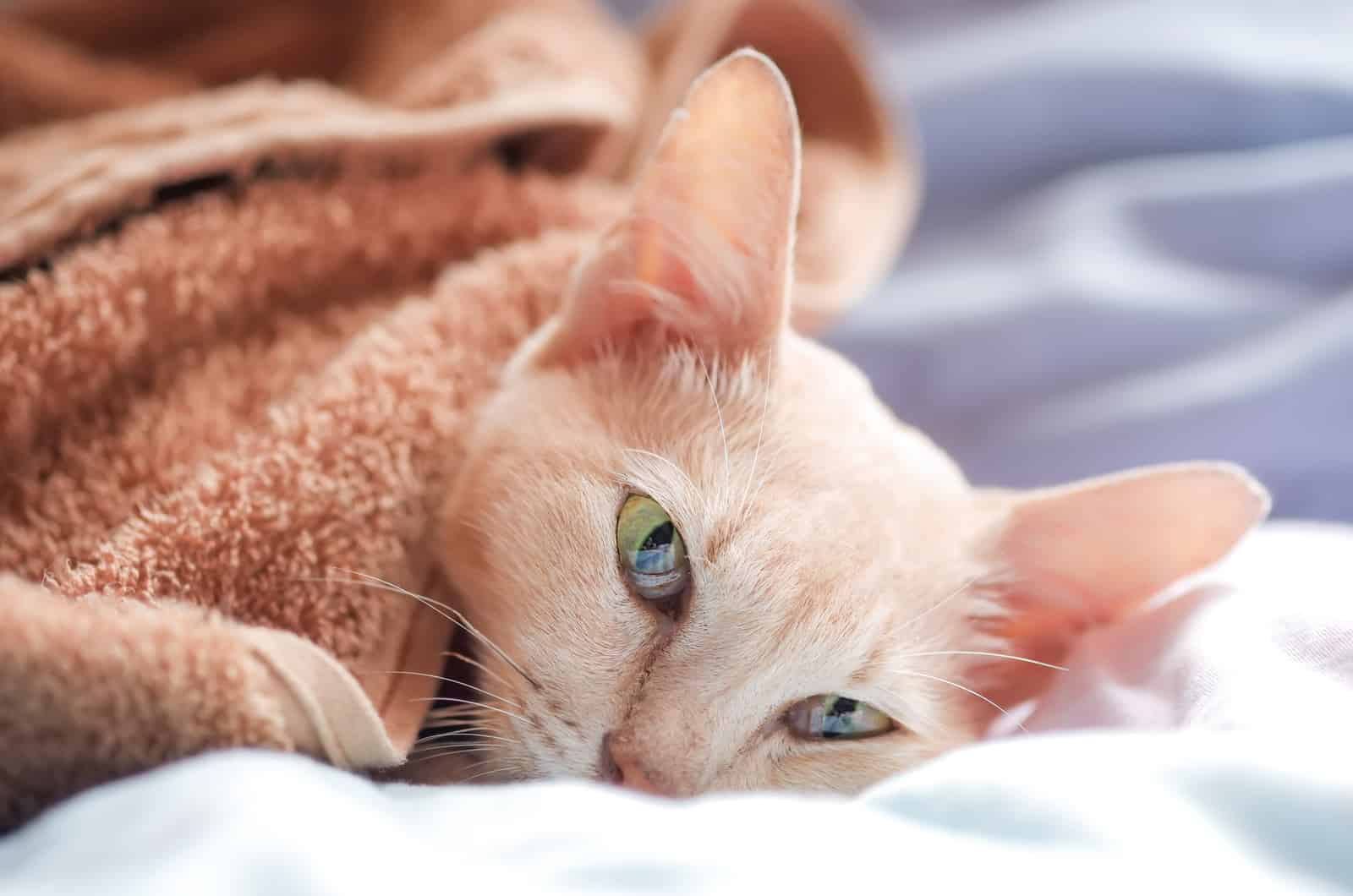
Symptoms
Cats with rectal prolapse are frequently agitated and they usually don’t want to move around very much.
Depending on the reason for the prolapse, they might lick their rectum and continue to arch as they struggle to defecate, urinate, or even give birth.
It is critical to consider the color of the protruding rectum. A newly protruding rectum will be dark pink at first, but will soon become dark red due to the swelling and exposure.
If a rectal prolapse isn’t addressed promptly, the rectum might develop a very dark red to black color. Darker colors may indicate tissue death, for example necrosis.
This is quite dangerous and might lead to serious long-term consequences. The prolapsed rectum’s wall can also rupture (e.g. ulcerate) and expand or swell.
You may also notice some changes in your cat’s behavior, including the following:
• Increased defecation effort
• Visible pain
• Anal licking on a regular basis
• Lack of energy
• Appetite loss
Causes
Rectal prolapse can result from any medical condition that causes a cat to strain excessively when urinating or pooping.
As I already mentioned, straining weakens the rectum-supporting tissue.
Rectal prolapse in cats is usually caused by the following conditions:
1. Constipation
2. A foreign body obstructing the colon or rectum
3. Vaginal or rectal mass
4. Intestinal parasites infestation
5. Urinary blockage
6. Diarrhea
7. Giving birth
The most prevalent cause of the prolapse in kittens is diarrhea caused by intestinal parasites.
Certain cat breeds, such as the Manx cat, or any cat that has had amputation surgery on their tails, is typically more prone to rectal prolapse because the nerves to their rectum and anus are damaged.
Diagnosis & Treatment Of A Rectal Prolapse
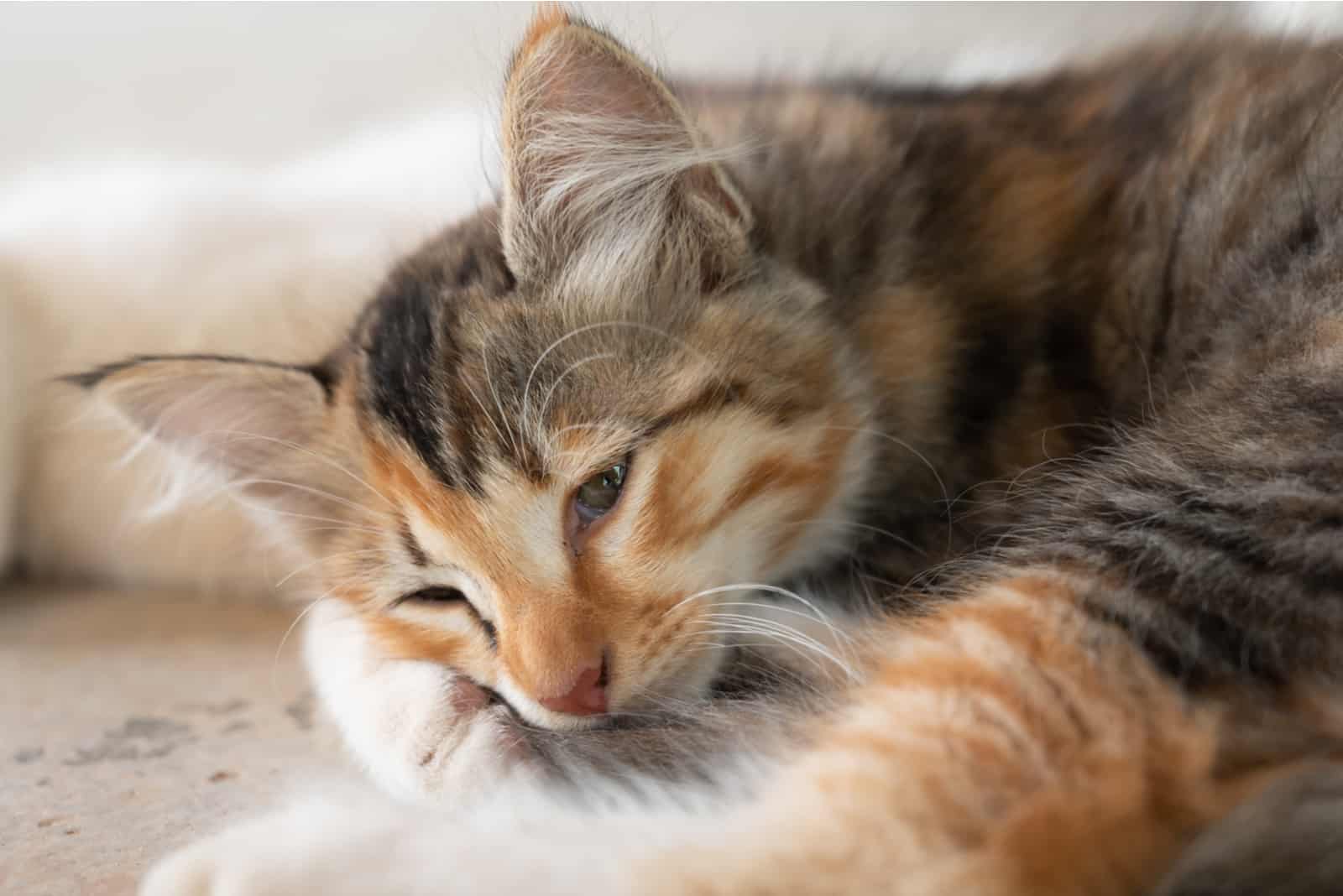
Veterinarians will diagnose a rectal prolapse in kittens or cats through a physical examination.
The prolapse is typically over by the time most cats are evaluated by a veterinarian, thus the rectum is continually exposed rather than only visible while the cat is defecating.
A fully prolapsed rectum appears as a long, somewhat tubular mass, protruding from the anus. Rectal lumps also might resemble rectal prolapses sometimes.
In any case, if you notice any form of prolapsed tissue protruding from your cat’s anus, you should consult your veterinarian immediately.
Once the prolapse has been identified, your veterinarian will investigate to see if there is any underlying reason for it.
Sometimes, treating the underlying cause will cure the prolapse issue as well. Intestinal parasites, rectal tumors, rectum stenosis, or an enlarged prostate are all potential causes of rectal prolapse.
All of these problems might cause your cat to struggle when pooping, resulting in rectal prolapse. To rule out intestinal parasites, a stool sample must be tested.
If the underlying reason for the prolapse is not clear based on the physical examination, blood tests and abdominal x-rays might be needed.
Your cat might have a simple rectal prolapse, or it might require rectal prolapse surgery, either way you must address the root cause of the rectal prolapse.
The treatment will depend on the severity of the rectal prolapse condition and its causes.
Simple Rectal Prolapse
Rectal prolapse surgery normally necessitates general anesthesia for your cat during the operation.
A prolapsed rectum can be hard to reduce, and the cat will already be in pain and discomfort.
After your cat has fallen asleep, the rectal tissue will be thoroughly cleansed. If there is edema, your veterinarian may use medicines or hypertonic saline to reduce the swelling.
A rectal exam should be conducted as well to rule out any rectal masses or other abnormalities.
If the rectal tissue is still good, your veterinarian will typically minimize the prolapse manually after thoroughly cleansing the rectum with sterile saline.
The rectum will be lubricated and carefully returned into the pelvic area once it has been cleaned.
Once the prolapse is minimized, a purse-string suture is used to close, or decrease, the anal opening and prevent the rectum from prolapsing again while your cat heals.
Colopexy
Colopexy is a less invasive surgery done to help with rectal prolapse in dogs or cats. It may be performed if a cat has a history of rectal prolapse or if surgery is necessary to remove any dead tissue.
An internal suture is used to join the rectum to the abdominal wall during a colopexy (i.e. the stitching). This is a major abdominal surgery, but it can prevent future prolapses.
Surgery Of Rectal Prolapse
If the rectum is prolapsed for a longer period of time and the tissue has become necrotic (black and dying), the dying piece of the rectum must be surgically removed.
After that, healthy rectal tissue is surgically reattached to the remains of the cat’s healthy tissue.
Depending on how much of the rectum is removed, this might cause fecal incontinence (incapability to regulate bowel movement) or other elimination problems. These might be either transitory or long-term.
Treatment Of The Underlying Cause
To avoid recurrence of the rectal prolapse, the underlying cause of the prolapse must be addressed too. The treatment or therapy will be determined by the underlying cause.
If the prolapse is caused by kitten delivery, your cat must be spayed to prevent it from happening again. Deworming can treat intestinal parasites, but urinary stones or blockages require specific treatments.
Recovery After Prolapsed Rectum Treatment

If your cat develops diarrhea during the process of healing, call your veterinarian immediately. This will certainly require special attention. Diarrhea raises the likelihood of another rectal prolapse.
Most cats will be given pain killers, stool softeners, and potentially antibiotics after surgery.
The appropriate drugs will be dictated by the condition of the rectal tissue at the time of surgery. Epidurals are occasionally used to relieve discomfort and remove the need to strain when your cat goes to the potty.
A cat that has an epidural and/or a surgical repair of their prolapsed rectum might have to be hospitalized for a few days, depending on how well they are recovering.
If your cat receives a purse-string suture, they could be discharged the same day.
The amount of rest required following a rectal prolapse surgery varies depending on whether a purse-string repair was used or if part of the rectum had to be surgically removed.
How long the cat’s recovery will take depends on the severity of the resection procedure.
Recovery After Simple Prolapsed Rectum Treatment
The purse-string suture must be left in place for 5-7 days while your cat heals from a simple rectal prolapse. This is the case when the rectal tissue is healthy and has been decreased without any complications.
Your cat must wear an E-collar during recovery to prevent licking, which could cause the suture to fall out prematurely and raise the infection risk.
To relieve strain on the purse-string suture when your cat defecates, softer foods and stool softeners will also be suggested.
After your cat has healed, the purse-string suture must be removed by a veterinarian, who will then allow your cat to get back to its normal dietary plan.
Recovery After Prolapsed Rectum Surgery
It will take a little longer to recover from a prolapse surgery that involves the surgical removal of part of the cat’s rectum.
Most cats will need to wear an E-collar and feed on soft food, using stool softeners, for two weeks or more after surgery.
Recurrence of the prolapse (indicating that the surgery has failed), fecal incontinence, and infection are among the potential risks of prolapse surgery.
Relapse Of The Prolapse
If your cat happens to have another prolapse, it will resemble the previous one, with rectal tissue sticking out of the cat’s anus.
If the tissue of the prolapsed mucosa is damaged or infected, it will be red and swollen, and you might even notice discharge around your cat’s anus.
Fecal incontinence, or the inability to regulate urination, is unusual, but it can happen due to the fact that a portion of the rectum has been surgically removed.
Final Words
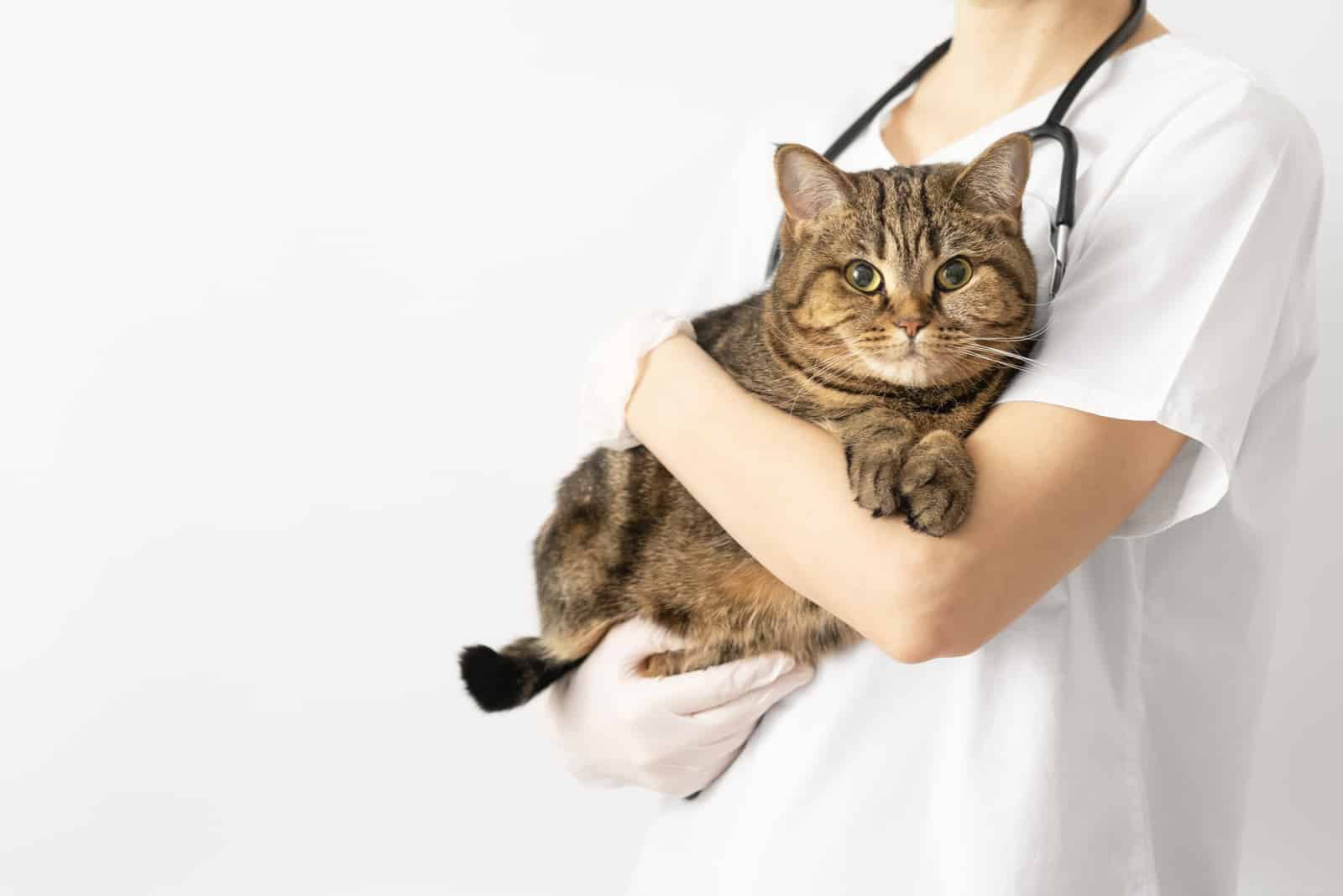
Rectal prolapse most commonly happens to 6 months old kittens. It is usually immediately obvious as their bodies are small and they don’t tend to hide signs of illness as adult cats do.
Adult cats typically hide their symptoms, so you are less likely to detect that something is wrong, but you may notice changes in their behavior.
To conclude, other than the rectal prolapse that is visible from the outside, the most common symptoms of a prolapsed rectum in a kitten or cat may include:
• Increased defecation effort
• Visible pain
• Anal licking on a regular basis
• Lack of energy
• Appetite loss
The most common causes for a prolapsed rectum involve the following conditions:
• Constipation
• A foreign body obstructing the colon or rectum
• Vaginal or rectal mass
• Intestinal parasites infestation
• Urinary blockage
• Diarrhea
• Giving birth
There are several different causes and symptoms, and several ways of treating a prolapsed rectum in a kitten or cat.
Hopefully, you will notice these aforementioned symptoms in time, because early treatment is always the best option!
Related articles:
• Cat Suddenly Lethargic And Weak – Causes & Treatment Options

